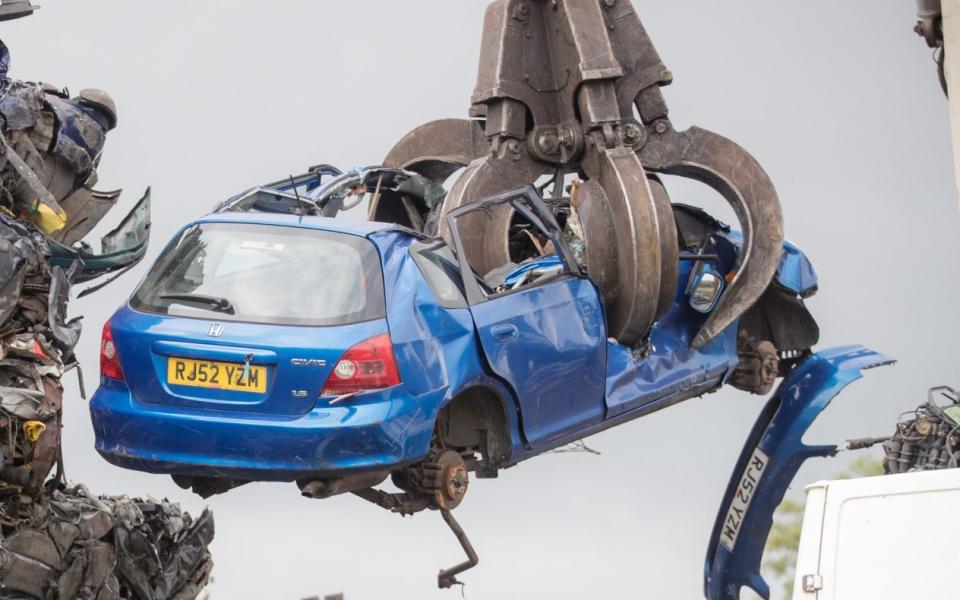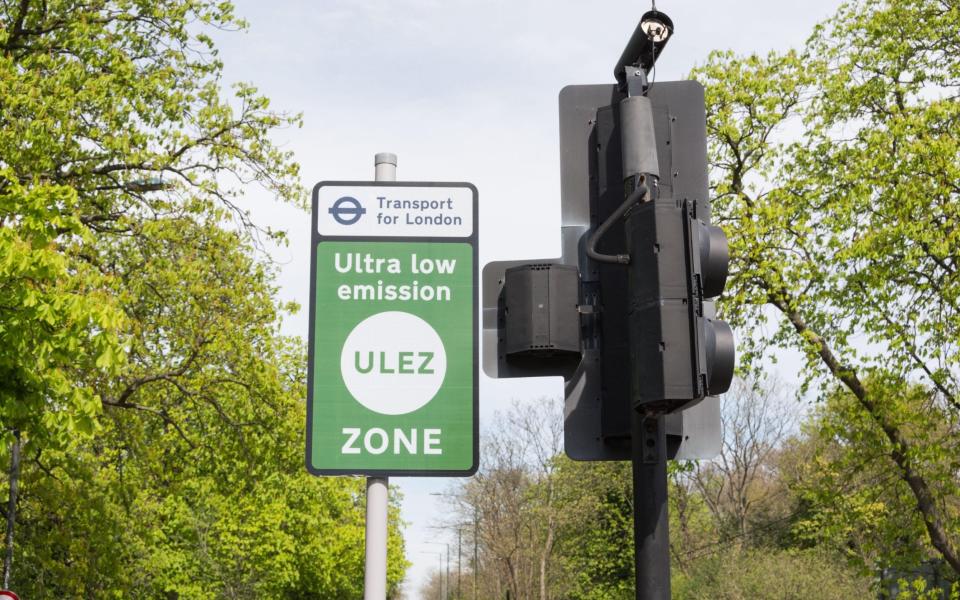The new London-wide Ulez scrappage scheme explained

Drivers in the capital are being offered a £2,000 grant by the city’s mayor to scrap the most polluting vehicles and move to more sustainable forms of transport. The £110 million scheme aims to prepare residents for the extension of the capital’s Ultra Low Emissions Zone (Ulez).
From 29 August 2023, the expanded Ulez will cover all 32 London boroughs plus the City of London. But will this latest scrappage scheme really help? Critics say the grant isn’t enough and that it’s targeting the wrong people.
What is a Ulez and which cars does it affect?
London’s Ultra-Low Emissions Zone is an area where owners of the most polluting vehicles must pay a £12.50 fee to drive. The aim is to improve air quality within the zone. It initially covered central London, was then extended to within the North and South Circular roads and later this year will incorporate all of Greater London.

Affected vehicles include motorcycles that don’t meet Euro 3 emissions standards (mostly pre-2007), petrol cars and vans that don’t conform to Euro 4 (usually pre-2006) and diesel cars and vans that don’t comply with Euro 6 standards (mostly pre-2015).
How does the scrappage scheme work?
Ulez scrappage is aimed at Londoners who claim certain low income or disability benefits and drive cars, motorcycles and wheelchair-accessible vehicles that don’t meet Ulez emissions standards.
Applicants can get up to £2,000 for scrapping a non-compliant car or up to £1,000 for a motorcycle. There is up to £5,000 available to scrap or retrofit a professionally converted wheelchair-accessible vehicle to Ulez conformity.
There are eight various options, such as taking £1,600 plus an adult-rate bus and tram pass which Transport for London (TfL) claims is worth £2,500 in total.

There is also a scheme for sole traders, businesses with up to 10 employees, or charities with a registered address in London. This offers them a grant of between £5,000 and £9,500 to scrap or retrofit their van or minibus that doesn’t meet the Ulez standards.
How does it differ from previous schemes?
The latest London scrappage scheme is an extension of the capital’s previous effort. Launched in October 2019, this offered car owners £2,000 and motorcyclists £1,000 to scrap the most polluting vehicles. TfL claims the £61 million fund helped to scrap about 12,000 of the most polluting vehicles. It ended in 2022.
The nationwide scrappage scheme of 2009-2010 provided a £1,000 Government payment towards the purchase of a new car from participating manufacturers, which would offer an additional £1,000. Drivers had to have owned an eligible car for more than a year; it had to be at least 10 years old.

Will it help this time? What about used car values?
Philip Nothard from consultant Cox Automotive revealed: “The used vehicle market is currently facing a stock shortage. This scheme is going to remove exactly those vehicles that are in short supply. And a shortage of supply increases values.
“It’s also aimed at lower income people who aren’t big buyers of cars. Middle income earners are the key buyers and they’re getting no support at all.”
Valuation service CAP HPI’s figures show used prices for the 10-year-old cars that may end up being scrapped are currently up 10 per cent year on year.
Dylan Setterfield, head of forecast strategy for CAP HPI, added: “People who meet the criteria for scrappage support are not likely to be driving a car around in the first place. If they are and scrap their non-compliant car, £2,000 isn’t sufficient to buy a car that does meet the Ulez criteria.
“Then there are the people who live outside the zone but go in and out of it. In London they get no support. When TfL talks about retrofitting, I think people will struggle to find a retrofitter to bring a car up to Ulez compliance. With the cost of living pressures, it’s the wrong time to be doing this.”
Where else are scrappage schemes offered?
Birmingham City Council has launched a Clean Air Zone Vehicle Scrappage and Travel Credit Scheme. Aimed at people who work in the Clean Air Zone (CAZ) and earn less than £30,000 per year, it offers £2,000 towards scrapping a polluting vehicle.
The money can then be put towards paying for public transport or buying a CAZ-compliant car from dealer giant Motorpoint.
The Scottish government is offering £3,000 to households who own the most polluting cars within a 20km (12.5 miles) radius of low emission zones in Edinburgh, Glasgow, Aberdeen and Dundee.
Drivers must be on means-tested benefits and have owned the vehicle for at least 12 months. They can put the money towards a compliant vehicle or get up to £1,000 extra per household for use on public transport.
Car manufacturer scrappage schemes
Since the government initiated its 2009 scrappage scheme following the financial crisis, many car manufacturers have launched their own to stimulate sales. Citroen, Hyundai, Kia, Toyota, Lexus, Mazda, Nissan and Renault have all had their own schemes enabling buyers to get a fixed sum for replacing an old smoker with a shiny new model.
Many makers ended their schemes as the global semiconductor shortage severely affected production so they struggled to match demand.
Renault still has its New for Old Scheme which gives a cash discount against the purchase of a new model. The level of savings varies, but the scheme allows for up to £2,000 off a new Arkana mild hybrid. You have to get your order in by 3 April 2023 to qualify.
Chinese van maker Maxus has also revealed it’s giving up to £14,000 off its eDeliver 9 electric van until 31 August 2023, if people trade in a registered vehicle.
What does the car industry think of scrappage?
Toyota and Lexus ran their own scrappage scheme from 2017 to 2021. “We sold 23,000 vehicles attributed to that initiative over the period,” Toyota’s David Crouch told us. And Citroen’s John Handcock recalled that the French firm’s 2019 “Le Citroen Swappage” scheme was viewed positively by the company.
But there are concerns that classic vehicles will end up being scrapped. Following the government’s 2009 scrappage scheme, it was revealed that victims included 88 Citroen 2CVs, 81 Morris Minors and seven Lancia Deltas including one rare (and now highly sought-after) Integrale high-performance model.
The Federation of British Historic Vehicles Clubs (FBHVC) said: “For those of us concerned with the preservation of our motoring heritage, the worry with scrappage schemes is that part of that heritage will be lost.”
https://tfl.gov.uk/modes/driving/ultra-low-emission-zone/scrappage-schemes

 Yahoo Finance
Yahoo Finance 